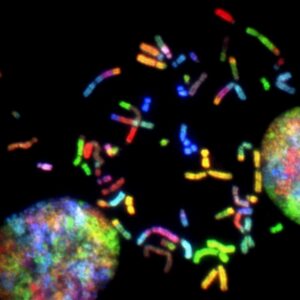
The year 2020 was indeed a unique experience for us all. A worldwide pandemic ended up disrupting life to the core.
Given the nature of the coronavirus and the way it spreads, its effects on our health are incomprehensible for medical professionals. Hence, scientists and researchers are trying to learn more about COVID-19 and how it affects humans physically, mentally, and emotionally. Every day, they are finding out something new about the virus.
Perhaps, the most pressing area of concern for researchers is COVID-19 long haulers. These are individuals who are dealing with the lingering effects of the disease. For some, the virus has permanently damaged the lungs but others have experienced an altered sweat smell, unexplained cognitive decline, and unexplained psychological effects. Additionally, some individuals have experienced rare neurological conditions. This post is about one such rare neurological condition that has a potential connection with COVID-19 and is known as Transverse Myelitis (TM).
As of now, three cases of transverse myelitis have been reported. While the number of the sample is still too small to prove a solid connection between TM and COVID-19, there is the possibility that the rare neurological condition may be related to the virus. Researchers are delving into the evidence and finding out this connection is an insight into what they have discovered so far.
What is Transverse Myelitis?
Transverse myelitis is a rare neurological condition that is a result of inflammation in the spinal cord. The inflammation leads to damage to your myelin which is the fatty substance that covers your neurons. Myelin typically works as an insulator around the neurons so the neural message to and from the brain doesn’t get lost along the way.
Loss of myelin causes the scarring of your spinal cord that blocks neural messages and leads to physical problems. And while the myelin has a natural ability to repair and regenerate, once the inflammation damages it, the condition is often irreversible.
This rare condition affects around 1-8 people per million every year. Moreover, the condition is more common in children between the ages of 10 and 19. However, it can affect people of all ages.
While the exact cause of transverse myelitis is not known, certain health conditions may lead to this disease.
-
-
- Lyme disease
- Viral and bacterial infections
- Measles
- Syphilis
-
Some individuals may also develop neurological conditions due to spinal injuries or defects in the structure of the spine. Atherosclerosis or other vascular diseases which reduce the oxygen supply to the spinal cord may be among the potential reasons for transverse myelitis.
Moreover, TM can be among the warning signs of other neurological or autoimmune conditions such as multiple sclerosis and lupus.
The Possible Connection Between Transverse Myelitis and COVID-19

Since viral infections can trigger the condition, there is a close link between COVID-19 and transverse myelitis. There is an established connection between certain strains of COVID-19 that have long-term neurological consequences. So far, there is evidence of three individuals who reported to have developed the condition following the COVID-19 infection.
The viral infection triggers the possible inflammatory complication that affected the myelin leading to physical symptoms.
Identifying the Rare Neurological Condition
There are a few classic symptoms of this rare neurological condition. It can be distinguished from other conditions because it leads to one or more of the following symptoms.
-
-
- Weakness in the muscles of arms and legs
- Sensory alterations such as the feeling of burning, twitching, and numbness especially in the lower body
- Bowel dysfunction
- Pain in the lower back, that’s often associated with shooting pain that radiates in the arms and legs
-
It is also common for people with transverse myelitis to experience frequent muscle spasms that are often accompanied by headache, fever, loss of appetite, and an overall feeling of discomfort.
If you have recovered from coronavirus and are experiencing any or all of the symptoms highlighted above, it’s best to consult your healthcare provider. While it is common for people to experience weakness and body aches as they recover from the COVID-19 infection, if any of the above-mentioned symptoms persist, it could be a sign of something more serious.
Your healthcare provider will likely recommend certain tests to diagnose transverse myelitis. Your doctor may recommend the following.
-
-
- Magnetic resonance imaging (MRI)
- Lumbar puncture (testing of spinal fluid)
- Certain blood tests
-
Treating and Managing Life with Transverse Myelitis
As of now, there is no known cure. While some people may recover from the symptoms, others have to live with it. In some cases, where the individual is experiencing severe symptoms, the healthcare provider may recommend hospitalization. However, in other cases, a combination of pain-relieving medications, such as corticosteroid drugs, and physical therapy is used to manage pain.
Corticosteroid drugs intend to suppress the immune system activity while speeding up the recovery process. However, if the medicines do not seem to reduce the intensity of pain and other symptoms, your health care provider may recommend plasma exchange. The process helps remove harmful antibodies from the blood, which may contribute to improving the symptoms. Your healthcare provider may also recommend physical therapy depending upon the severity and type of your disease.
The long-term effects of transverse myelitis are not constant. However, they may vary from person to person. Around ⅓ of the individuals diagnosed with transverse myelitis recover to a great extent with almost all of their symptoms gone. Another ⅓ recover partially with some of their symptoms remaining persistent. Again, the intensity of pain and severity may vary from person to person. The last third of patients diagnosed with the disease recover poorly and continue to experience the symptoms which also can lead to physical disabilities. One of the possible concerns, especially for this group, is how the disease affects them mentally. Due to their physical immobility and persistent pain, such patients are more prone to developing psychological conditions such as depression and anxiety.
Final Words
It has been over a year that the global COVID-19 pandemic has flipped our lives upside down. And as researchers are learning more about it and the new data emerges, there is growing evidence that there is a possible connection between COVID-19 and several neurological conditions, including transverse myelitis. Until there is more concrete evidence on how COVID-19 can lead to long-lasting physical and mental health conditions, it’s best to keep doing what infectious disease experts have been asking for months. Maintain social distance, wear a face mask, frequently wash or sanitize your hands, and get vaccinated!
